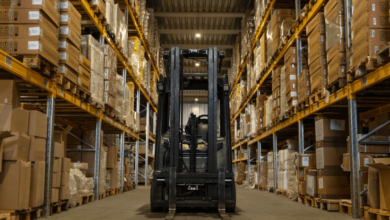Shopfitting Brisbane: Designing Retail Spaces That Work

Running a retail business is about more than just having the right products—it’s also about presentation, atmosphere, and customer experience. The way a store looks and functions can determine whether a customerwalks in, stays to browse, and ultimately makes a purchase. This is why shopfitting in Brisbane has become an essential part of the retail industry, helping business owners create spaces that are both functional and visually appealing.
Brisbane’s retail landscape is diverse, with everything from boutique fashion outlets and homewares stores to bustling cafes, large shopping centres, and suburban shops. With so much variety, professional shopfitting plays a central role in ensuring each space reflects the unique identity of the business and meets the needs of its customers.
What is Shopfitting?
Shopfitting is the process of planning, designing, and building the interior of a commercial space. It covers everything from the initial design stage to the installation of fixtures, fittings, signage, flooring, and lighting. These shopfitting services are tailored to transform an empty or outdated area into a fully functional and attractive retail or commercial environment. The goal is to create a store that is practical for staff, welcoming for customers, and reflective of the brand’s style and values.
The process usually includes:
- Concept design and planning – Working out the best layout and flow of the space.
- Joinery and fixtures – Shelving, counters, racks, and displays that suit the products.
- Lighting and flooring – Elements that create the right atmosphere and highlight merchandise.
- Signage and graphics – To reinforce brand identity and attract attention.
- Compliance and safety checks – Ensuring the space meets local building and safety standards.
In Brisbane, where retail spaces often vary in size and location—from heritage-style buildings in the inner city to modern shopping centres in suburban areas—shopfitting needs to be tailored to the specific environment.
Why Shopfitting is Important for Brisbane Businesses
Brisbane’s retail industry is competitive, and customers today expect more than just products on shelves. They want an enjoyable experience. A well-designed space can influence purchasing decisions, encourage customers to spend more time browsing, and increase overall sales.
Some of the key reasons why shopfitting is so valuable include:
- Maximising Space
Shopfitting makes the most of every square metre. Smaller stores benefit from clever storage and display solutions, while larger stores can be designed to avoid wasted or empty areas. - Enhancing Customer Flow
Strategic layouts guide customers through the store, encouraging them to explore more products and creating a natural path to the checkout. - Improving Visual Appeal
Colours, textures, lighting, and display techniques all contribute to a store’s atmosphere. A visually appealing shop is more likely to attract foot traffic and make a lasting impression. - Reflecting Business Identity
Shopfitting allows businesses to express their style—whether that’s modern and minimalist, warm and rustic, or bold and energetic. - Meeting Legal and Safety Standards
Professional shopfitting ensures compliance with Brisbane’s building codes, accessibility requirements, and safety regulations.
Key Elements of Effective Shopfitting
1. Design and Layout
Good shopfitting starts with design. A carefully planned layout not only improves aesthetics but also ensures functionality. For example, a clothing store may need open floor space for browsing racks, while a café requires a logical flow from ordering to seating.
2. Lighting
Lighting is one of the most important elements of shopfitting. Bright, focused lights can highlight key products, while ambient lighting sets the overall mood. In Brisbane’s sunny climate, combining natural light with artificial lighting can also create a welcoming environment.
3. Fixtures and Fittings
Shelves, display units, counters, and racks need to be both practical and durable. The choice of materials—wood, glass, metal, or a mix—depends on the style of the business and the products being displayed.
4. Signage and Branding
Clear signage helps customers navigate the store and draws attention to promotions. Graphics and branded elements reinforce the business’s identity, making the store memorable.
5. Accessibility and Compliance
Shopfitting in Brisbane must comply with Australian building codes and accessibility standards. This includes providing wheelchair access, fire safety measures, and appropriate emergency exits.
Benefits of Professional Shopfitting
Investing in professional shopfitting brings long-term benefits:
- Increased Sales – A layout designed with customer behaviour in mind can lead to higher sales and more impulse purchases.
- Stronger Customer Loyalty – A pleasant shopping experience encourages repeat visits.
- Efficient Operations – Staff benefit from a workspace that is easy to manage, with storage and displays designed for convenience.
- Durability – High-quality materials and workmanship reduce the need for frequent repairs or renovations.
- Competitive Advantage – In Brisbane’s busy retail market, standing out is essential. Shopfitting gives businesses a unique edge.
Shopfitting Across Different Industries
Shopfitting in Brisbane is not limited to traditional retail stores. It plays a role in many industries, including:
- Hospitality – Cafes, bars, and restaurants rely on shopfitting to create atmosphere and manage customer flow.
- Health and Beauty – Salons, spas, and pharmacies need practical yet stylish spaces that make clients feel comfortable.
- Corporate Offices – Reception areas, meeting rooms, and open-plan workspaces benefit from thoughtful fitouts.
- Specialty Stores – Bookshops, homewares, electronics, and other niche retailers require customised displays.
Each industry has unique requirements, and professional shopfitting ensures those needs are met.
The Shopfitting Process in Brisbane
A typical shopfitting project follows a structured process:
- Consultation and Briefing – Understanding the business’s goals, budget, and requirements.
- Design and Planning – Developing drawings, layouts, and mood boards.
- Approval and Permits – Ensuring compliance with Brisbane City Council regulations and building codes.
- Construction and Installation – Coordinating trades, managing timelines, and installing fixtures.
- Final Handover – Inspecting the completed space to ensure quality and safety standards are met.
This process ensures that the final result is practical, attractive, and aligned with the business’s vision.
Read Also: Writing a Business Plan for Tech Startups: Key Elements to Include
Future Trends in Shopfitting
The retail industry is constantly evolving, and shopfitting in Brisbane is adapting to meet new demands. Some current and emerging trends include:
- Sustainable Materials – Eco-friendly designs using recycled and renewable resources.
- Technology Integration – Digital screens, self-service checkouts, and interactive displays.
- Flexible Layouts – Modular fixtures that can be easily rearranged for seasonal displays.
- Experience-Focused Design – Creating spaces that encourage interaction and social media sharing.
These trends reflect the growing importance of customer experience and sustainability in modern retail.
Final Thoughts
Shopfitting is a crucial part of building a successful retail or commercial space in Brisbane. From maximising floor space to creating memorable customer experiences, it goes beyond basic construction to deliver value that lasts.
Whether it’s a boutique clothing store in Fortitude Valley, a café in South Bank, or a retail outlet in the suburbs, thoughtful shopfitting ensures that businesses stand out in a competitive market. For Brisbane business owners, investing in a well-designed shop fitout is not just about looks—it’s about creating a functional, compliant, and profitable environment.




